Earlier this month, Lenovo announced the ThinkPad 25, a limited edition 25th anniversary model of its iconic line of portable PCs. It's based on the chassis of the ThinkPad T470, but it has the classic seven-row keyboard and a blue Enter key.
Along with the old school keyboard design, you'll see the old RGB ThinkPad logo, and it actually comes with four TrackPoint caps. The package is an homage to the original design language of IBM's ThinkPad, which was based on the simplicity of a bento box.
But while this is a throwback device, it definitely has modern specs. Rather than a 25MHz Intel 80486, it comes with a 2.7GHz Core i7-7500U processor, along with an Nvidia GeForce 940MX GPU. It runs Windows 10 Pro instead of Windows 3.1, and it comes with 16GB of RAM and a 512GB NVMe SSD.
Specs
| CPU | Intel Core i7-7500U (2.7GHz) |
|---|---|
| GPU | Nvidia GeForce 940MX |
| Display | 14-inch 1080p multitouch |
| Body | 13.25x9.15x0.79in (336.6x232.5x19.95mm), 3.7 pounds |
| RAM | 16GB DDR4-2400 |
| Storage | 512GB NVMe SSD |
| Ports |
|
| Camera | 720p HD, fixed focus |
| Windows Hello | Fingerprint, IR camera |
Day one
It's definitely worth checking out the unboxing video for the ThinkPad 25, because the packaging is pretty nice. Lenovo clearly put a lot of thought into this machine, and that shows in the way that it's packaged.
Design
As I mentioned earlier, the ThinkPad 25 comes in a chassis that's based on the ThinkPad T470, which was released earlier this year. It's not particularly thin or light, but it does allow enough room in the body for a dedicated GPU. And that body is a black, carbon fiber material, which is the same as the rest of the ThinkPad lineup.

On the left side of the device, you'll find Lenovo's proprietary power port, Thunderbolt 3, and a USB 3.0 Type-A port. The good news is that you can charge the device with a legacy or a USB Type-C cable, which is a feature that I always love. I always prefer the convenience of one charger for all of my devices.
On the right side are another two USB 3.0 Type-A ports, along with HDMI 1.4b, Ethernet, and 3.5mm audio input/output. Unfortunately, with HDMI 1.4, it's going to struggle if you want to extend this to a 4K monitor, so you'll want to use the Thunderbolt port for that, which can output to two 4K monitors or one 5K screen.

Interestingly, the hinge on the screen folds back to 180 degrees, so you can make the screen flat with your desk. I'm really not sure why that is, as a 360-degree hinge would undoubtedly be more useful.

To the right of the keyboard (not underneath it) is a fingerprint sensor that's used for Windows Hello, and there's also an IR camera above the screen, so you have your choice in biometric authentication methods.
Display
The Lenovo ThinkPad 25 uses a 14-inch 1080p LCD with multitouch. It's not a convertible, so you're not going to be using the touchscreen for drawing or anything like that, but it's always nice to have the option to touch the screen when you need to.
Personally, I think that the display is the least appealing part of the PC. I've always felt that 1080p is a bit too low on a 14-inch device, especially when that PC costs almost $2,000. 1440p feels like the sweet spot, not using as much battery as a 4K screen, but not showing as much pixelation as 1080p.

It's also a matte anti-glare screen, which has good and bad properties. The good news is that you can touch the screen and it doesn't show fingerprints as easily, and it really doesn't reflect a glare. The bad news is that it's not as pleasing to the eye. The colors aren't as vibrant as you'd get on regular screens, and in some cases, they just look dull.
But of course, ThinkPads are work machines, and such a display is great for work. If you're using it to watch movies, maybe not.
The retro keyboard
Let me just say that I'm a big fan of Lenovo's ThinkPad keyboards, as in the modern ones. I find them to be among the most comfortable and accurate to type on out of all PCs.
So as far as the retro-style keyboard on the ThinkPad 25 goes, there are things that I love and things that I don't care for as much. The keys are square, unlike the rounded bottom keys that you'll find on modern Lenovos. They're not exactly islanded, which is to say that there isn't any space between the keys, but they're raised enough where it's still easy to type accurately. It really feels like the old school mechanical keyboard that you'd find in portable PCs of the era.

I do find the keyboard pleasant to type on; I just don't find it as pleasant as something like a ThinkPad X1 Yoga or X1 Tablet. I also found that the keys would sort of jam from time to time. First, it was the '0' key, and it wouldn't work unless I pressed it really hard. Then suddenly, it worked fine, and it was the 'W' key that started causing an issue.

What I do really enjoy are the dedicated keys for volume control, rather than including them in the function keys like most OEMs do. I also appreciate that the power button is right in the middle, front and center, rather than off on the side of the device. Media controls are included in the arrows, and there are sculpted cutouts around the navigation arrows, making them easier to use.

I really do love all of these features, and oddly enough, I really like the blue Enter key. I'm not sure why, but I do.
Ultimately, what I'd really love to see is a modern ThinkPad keyboard with these cool features, but I'm dreaming, and that's just me. The keyboard is quite nice, and I think you'll enjoy it.
Windows Hello
I really appreciate the Windows Hello efforts by Lenovo here, and I hope it's a sign of things to come. In every Lenovo device that I've used, there's a fingerprint reader which, as far as I'm concerned, is not the best method for Windows Hello.

The ThinkPad 25 not only includes a fingerprint sensor, but it also has an IR camera for facial recognition. This means that you can choose one or the other, or you can use both. I have them both setup, and when I boot up the machine, I put my finger on the sensor and just wait for one of the two to recognize me.

Personally, I think that facial recognition is the more natural form of Windows Hello. When you boot up a PC, it just sees you and logs you in.
I have noticed though that the ThinkPad 25's IR camera can take a few extra seconds to load, which is not cool. Luckily, you have the fingerprint sensor as a backup.
Battery life
The Lenovo ThinkPad 25 includes an internal and a replaceable external battery. The internal one is 24Wh, and the external one is the same, but can be replaced with a battery that's 48Wh or 72Wh. Lenovo says that according to MobileMark 2014, battery life with the three different batteries is 13.9, 20.9, and 27.1 hours, respectively.
Of course, battery benchmarks almost never reflect real life, and this one is no different. In real life, I find that it gets about six hours, but when using it for particularly resource-intensive tasks, that can go down below four hours. You can achieve the best battery life by using all UWP apps, like the Edge browser, but that's not real life.
In real life, we're using Win32 apps like Google's Chrome browser. I'm also using the Skype desktop app, and occasionally, Photoshop. The one UWP app that I do use these days is OneNote. From my experience though, the average use case will get six hours of battery life, which of course, is subject to change.

One thing that's great is that you can hot-swap the batteries using Lenovo's Power Bridge technology, meaning that you don't actually have to power down the machine to change the battery. The device draws power from the external battery first and the internal one later, meaning that when that low battery warning comes in, you can swap out that external battery without it affecting performance.
When charging, the internal battery is charged first. As I mentioned earlier, you do have your options when charging up the machine. Businesses may have a bunch of proprietary cables lying around, or you might have a variety of laptops that use USB Type-C, and you might want to use the same one for all of them.
Durability
The ThinkPad 25 is MIL-STD 810G certified, which means that Lenovo has basically beaten the hell out of it in testing. This is standard with the ThinkPad lineup.
I'd love to tell you that I went out and dropped this thing off of a bridge or something to see how well it holds up, but I did not. Lenovo did provide some examples of Mil-Spec certifications though.

The device is subjected to extreme temperatures, including being frozen at -20 degrees Celsius for over 72 hours, being subject to high temperatures up to 60 degrees Celsius for seven one-day cycles, and temperatures oscillating between -20 degrees and 60 degrees Celsius over three cycles in a two-hour duration.
The machine is also tested in 91-98% humidity. Then, there's a sand test, vibration tests, and mechanical shock tests.
The point is, you can probably feel safe carrying around the ThinkPad 25.
Software
The ThinkPad 25 is a Signature PC, which means that there is minimal third-party software, at least that's installed by the manufacturer. Microsoft includes plenty of it with Windows 10 these days - which is easily uninstalled - but that includes games like Bubble Witch 3 Saga, Candy Crush Saga, and Minecraft. And yes, Microsoft even installs those on Windows 10 Pro machines for businesses.
Lenovo offers its Settings and Companion apps, which are useful. Settings offer a nifty battery icon that can sit in the taskbar and tell you the percentage remaining, making it easier to glance at how much power is remaining. Naturally, it does other things with a variety of other settings.
Lenovo Companion is a great way to make sure that all of your drivers are up to date. You can also use it to scan the hardware, view warranty details, and more.
But the best part of the software is something that's not there at all: McAfee LiveSafe. Seriously, I don't think anyone actually wants McAfee on a new PC, and you won't have to deal with uninstalling it on this one.
Performance
In my day to day use of the ThinkPad 25, I found the performance to be great, for most tasks at least. I was able to edit videos on it without issue, and of course, it has plenty of RAM for having a lot of applications open like Chrome, Skype, OneNote, Slack, and anything else I might be doing.
While the Nvidia 940MX certainly leaves the machine better off than if it was with just Intel HD Graphics 620 - which is what is included with the Core i7-7500U processor - it's still not very good for playing games. Mobile games, and some that require fewer resources like Cuphead, work great, but I wouldn't recommend going any heavier than that. Make sure to check the minimum system requirements in the Microsoft Store, or wherever you get your games from.
But I can't recall a case during day-to-day use when the ThinkPad 25 made me wish it had more power to get through the current task. It does quite well.
I used PCMark 8 for benchmarks, and ran three tests: Home, Creative, and Work. First up is Home, which tests things like web browsing, photo editing, casual gaming, and more.


Better than 51% of results seems to be average for the devices that I've been testing these days. Next up is Creative, which tests video editing, photo editing, and more.


Better than 47% of results isn't as good as I'd have liked with a dedicated GPU, but it's good enough. Finally, the Work test checks productivity-related tasks.


As you can see, the ThinkPad 25 does fairly well on the Work test.
Conclusion
I found Lenovo's ThinkPad 25 to be a thoroughly enjoyable machine, but the bottom line is that if you're considering buying it, get it for the unique features that it offers, or nostalgia. If you're buying it for the specs, ports, Windows Hello, durability, and other great but not unique features, there are better alternatives, like the ThinkPad X1 Yoga.

Really, you have to be digging the keyboard. It's pretty awesome, and if it's something that you've always wanted on a modern device, you'll be extremely happy with it.
I also don't think that the $1,899 price tag is too expensive in this case. It comes with Windows 10 Pro, a Core i7, 16GB RAM, a 512GB NVMe SSD, it's made from slick carbon fiber, and more. Normally, ThinkPads leave me thinking that the machine is really great, but also really expensive; not in this case.
The Lenovo ThinkPad 25 is definitely a PC that will set you apart from the rest of the pack, which likely includes a bunch of MacBooks and MacBook clones. It's certainly one of the more original laptops out there.
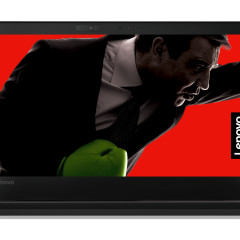
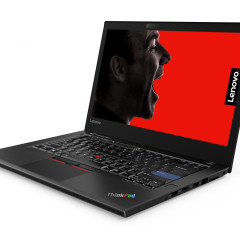
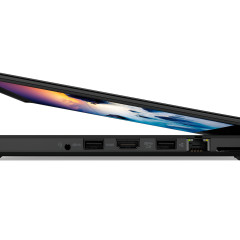
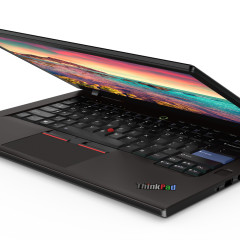
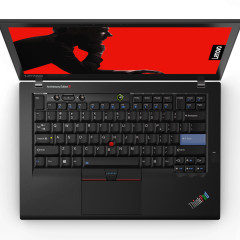
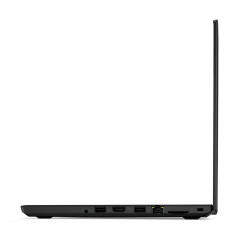
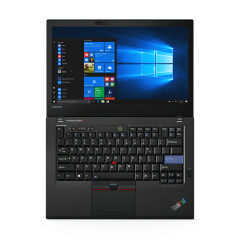
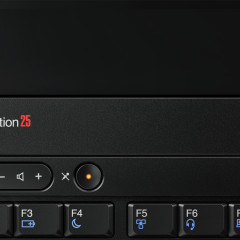
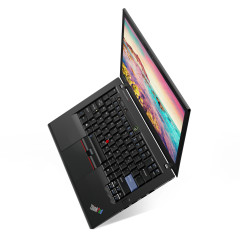
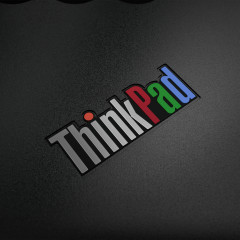
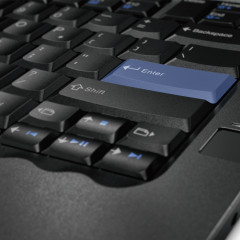
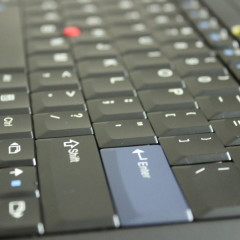
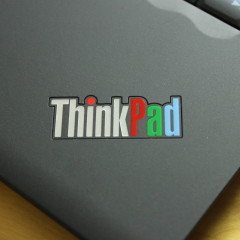
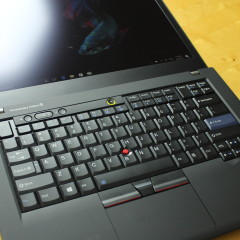
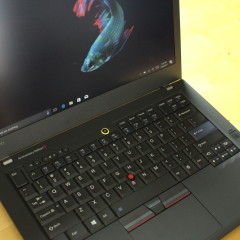
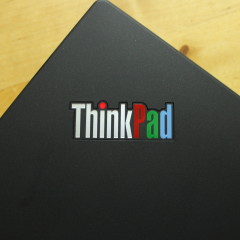
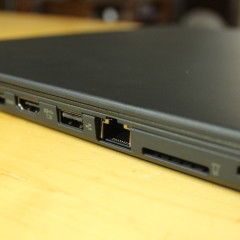
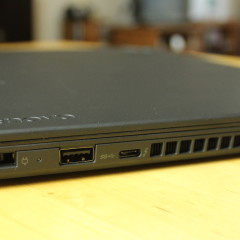
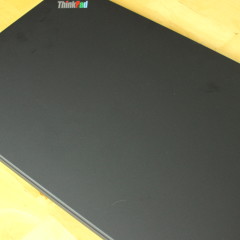
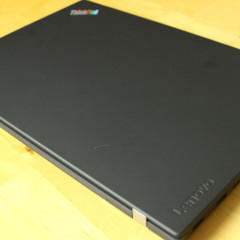










4 Comments - Add comment